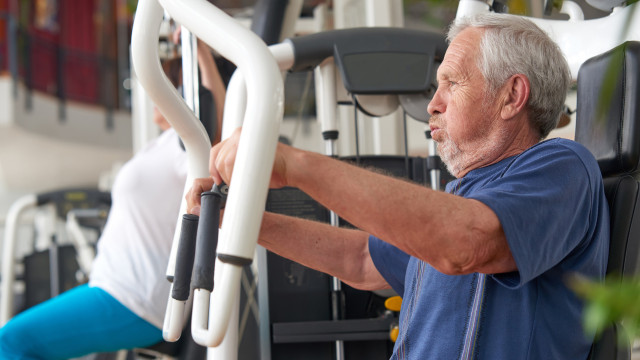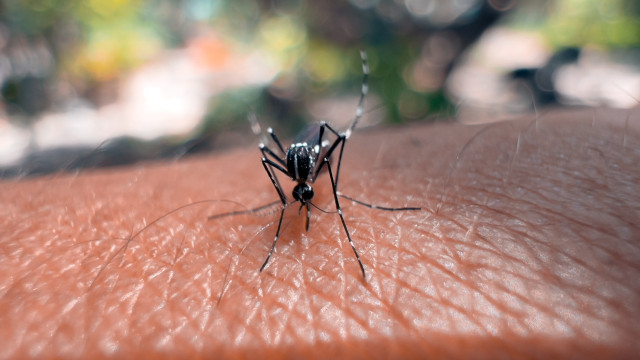






























See Also
See Again
© Shutterstock
0 / 31 Fotos
© Shutterstock
1 / 31 Fotos
Who’s at risk?
- Edema is more common in the senior population (65+) as well as in pregnant women.
© Shutterstock
2 / 31 Fotos
How common is it?
- Because there are a wide range of possible causes, edema is a pretty common condition. Mild cases tend to go away on their own, so people end up not seeking medical help. This means that quantifying the number of people affected by edema is very difficult.
© Shutterstock
3 / 31 Fotos
How does it manifest?
- Edema is essentially swelling, so the affected body part will increase in size. However, it's not always visible, like when it occurs in the lungs or brain, for instance.
© Shutterstock
4 / 31 Fotos
How long does it last?
- This will depend on the case, but it usually only lasts a few days, with the first two to three days being the worst.
© Shutterstock
5 / 31 Fotos
Symptoms
- The swelling and puffiness is caused by a buildup of fluid in the body’s tissues. In addition to the change in size, the skin may also appear stretched and shiny.
© Shutterstock
6 / 31 Fotos
Symptoms
- The affected area may feel heavy, full, or tight, and may even be sore and sensitive to touch.
© Shutterstock
7 / 31 Fotos
Symptoms
- When edema affects the legs, ankles, or feet, walking may become difficult, too.
© Shutterstock
8 / 31 Fotos
Causes: gravity
- Edema has a number of possible causes. Sometimes gravity is to blame. Simply sitting or standing for too long may lead fluid to pull down and build up in areas such as your legs and feet. This is called dependent edema.
© Shutterstock
9 / 31 Fotos
Causes: venous insufficiency
- Edema can also be caused by venous insufficiency. This is when the valves of your veins are weak, and struggle to push blood back up to the heart. This often results in fluid buildup in the legs, as well as in varicose veins.
© Shutterstock
10 / 31 Fotos
Causes: underlying medical conditions
- There are a number of conditions that can lead to the buildup of fluid. Edema may be a symptom of underlying medical conditions such as heart failure, kidney, liver, and lung disease, as well as thyroid problems.
© Shutterstock
11 / 31 Fotos
Causes: medication
- Some medications may have edema as a side effect. This is particularly true with some blood pressure medications, as well as some painkillers and anti-inflammatory drugs. Thiazolidinediones, used to treat diabetes, may also be the culprit.
© Shutterstock
12 / 31 Fotos
Causes: diet
- Poor nutritional choices may influence how your body works. A diet rich in salt (sodium) has been associated with edema. An extreme lack of protein over time may also lead to edema.
© Shutterstock
13 / 31 Fotos
Causes: pregnancy
- The uterus puts pressure on blood vessels in the lower body, which may lead to edema.
© Shutterstock
14 / 31 Fotos
Causes: compromised immune system
- Edema may be a sign of a compromised immune system. This may occur when there is an infection, allergic reaction, or in the presence of more serious conditions such as cancer.
© Shutterstock
15 / 31 Fotos
Diagnosis
- Your medical provider will first observe the swelling and consider where in the body it occurs. The appearance of your skin will also be taken into consideration.
© Shutterstock
16 / 31 Fotos
Diagnosis: edema grading
- Edema grading is a scale used to evaluate how much fluid is trapped, and consequently the severity of the edema. This is done by performing a pitting test.
© Shutterstock
17 / 31 Fotos
Diagnosis: edema grading
- A pitting test is done by pressing the finger on the swollen area for five to 15 seconds. After release, a dimple (pit) will appear in the skin. This indicates that indeed there is fluid present in the tissues. How quickly the dimple rebounds (i.e. goes back to normal) will determine the grade of the edema.
© Shutterstock
18 / 31 Fotos
Diagnosis: edema grades
- If there is an immediate rebound with a 2 millimeter (mm) pit, then the edema is considered a grade 1. Grade 2 is when the rebound of a 3-4 mm pit occurs in less than 15 seconds. Grade 3 is when the rebound is greater than 15 seconds but less than 60 seconds (in a 5-6 mm pit).
© Shutterstock
19 / 31 Fotos
Diagnosis: edema grades
- A grade 4 edema is the top of the scale. It’s determined as such when the rebound of an 8 mm pit takes between two to three minutes.
© Shutterstock
20 / 31 Fotos
Treatment
- Treatment will depend on the underlying cause of the edema. Mild cases often go away on their own. This is usually the case with pregnant women.
© Shutterstock
21 / 31 Fotos
Treatment
- Diuretics (water pills) may be prescribed to help flush out the trapped fluid.
© Shutterstock
22 / 31 Fotos
Treatment
- Lifestyle changes may also be necessary to treat edema when they’re caused by conditions such as lung disease or heart failure. Dietary changes such as reducing salt intake and alcohol consumption, as well as quitting smoking, may be required.
© Getty Images
23 / 31 Fotos
Treatment
- In the case of edema caused by medication, it is advisable to discuss this with your doctor and not stop taking the medication altogether without medical indication to do so.
© Shutterstock
24 / 31 Fotos
How to deal with and prevent edema
- As previously mentioned, treatment will depend on the cause. But there are ways to ease the symptoms and, on some occasions, prevent them. Let’s take a look at some of these.
© Shutterstock
25 / 31 Fotos
Dealing with edema: compression
- Pressure may be beneficial when dealing with edema. Compression garments may be worn around the affected area (e.g. compression socks).
© Shutterstock
26 / 31 Fotos
Dealing with edema: movement
- Simply moving around is one of the best things one can do for edema. Moving the body will help move fluid back toward the heart.
© Shutterstock
27 / 31 Fotos
Dealing with edema: elevation
- Raising the swollen area helps reduce the swelling. Elevation should be done above the level of the heart. You may choose to do this when you spend a lot of time in the same position (e.g. sleeping).
© Shutterstock
28 / 31 Fotos
Dealing with edema: protection
- It’s important to maintain the swollen area clean and protected. A lotion or cream may be used to keep the skin moisturized and prevent it from cracking, which would leave the area more vulnerable to infections.
© Shutterstock
29 / 31 Fotos
When to seek immediate medical assistance
- Edema is usually not a life-threatening condition, but some symptoms may require a trip to your healthcare provider. Do so if you develop symptoms such as shortness of breath, pain or discoloration of the skin, or an open sore in the edema area. Sources: (Cleveland Clinic) (Mayo Clinic) (WebMD) (Medical News Today) See also: Easy ways to improve poor circulation
© Shutterstock
30 / 31 Fotos
© Shutterstock
0 / 31 Fotos
© Shutterstock
1 / 31 Fotos
Who’s at risk?
- Edema is more common in the senior population (65+) as well as in pregnant women.
© Shutterstock
2 / 31 Fotos
How common is it?
- Because there are a wide range of possible causes, edema is a pretty common condition. Mild cases tend to go away on their own, so people end up not seeking medical help. This means that quantifying the number of people affected by edema is very difficult.
© Shutterstock
3 / 31 Fotos
How does it manifest?
- Edema is essentially swelling, so the affected body part will increase in size. However, it's not always visible, like when it occurs in the lungs or brain, for instance.
© Shutterstock
4 / 31 Fotos
How long does it last?
- This will depend on the case, but it usually only lasts a few days, with the first two to three days being the worst.
© Shutterstock
5 / 31 Fotos
Symptoms
- The swelling and puffiness is caused by a buildup of fluid in the body’s tissues. In addition to the change in size, the skin may also appear stretched and shiny.
© Shutterstock
6 / 31 Fotos
Symptoms
- The affected area may feel heavy, full, or tight, and may even be sore and sensitive to touch.
© Shutterstock
7 / 31 Fotos
Symptoms
- When edema affects the legs, ankles, or feet, walking may become difficult, too.
© Shutterstock
8 / 31 Fotos
Causes: gravity
- Edema has a number of possible causes. Sometimes gravity is to blame. Simply sitting or standing for too long may lead fluid to pull down and build up in areas such as your legs and feet. This is called dependent edema.
© Shutterstock
9 / 31 Fotos
Causes: venous insufficiency
- Edema can also be caused by venous insufficiency. This is when the valves of your veins are weak, and struggle to push blood back up to the heart. This often results in fluid buildup in the legs, as well as in varicose veins.
© Shutterstock
10 / 31 Fotos
Causes: underlying medical conditions
- There are a number of conditions that can lead to the buildup of fluid. Edema may be a symptom of underlying medical conditions such as heart failure, kidney, liver, and lung disease, as well as thyroid problems.
© Shutterstock
11 / 31 Fotos
Causes: medication
- Some medications may have edema as a side effect. This is particularly true with some blood pressure medications, as well as some painkillers and anti-inflammatory drugs. Thiazolidinediones, used to treat diabetes, may also be the culprit.
© Shutterstock
12 / 31 Fotos
Causes: diet
- Poor nutritional choices may influence how your body works. A diet rich in salt (sodium) has been associated with edema. An extreme lack of protein over time may also lead to edema.
© Shutterstock
13 / 31 Fotos
Causes: pregnancy
- The uterus puts pressure on blood vessels in the lower body, which may lead to edema.
© Shutterstock
14 / 31 Fotos
Causes: compromised immune system
- Edema may be a sign of a compromised immune system. This may occur when there is an infection, allergic reaction, or in the presence of more serious conditions such as cancer.
© Shutterstock
15 / 31 Fotos
Diagnosis
- Your medical provider will first observe the swelling and consider where in the body it occurs. The appearance of your skin will also be taken into consideration.
© Shutterstock
16 / 31 Fotos
Diagnosis: edema grading
- Edema grading is a scale used to evaluate how much fluid is trapped, and consequently the severity of the edema. This is done by performing a pitting test.
© Shutterstock
17 / 31 Fotos
Diagnosis: edema grading
- A pitting test is done by pressing the finger on the swollen area for five to 15 seconds. After release, a dimple (pit) will appear in the skin. This indicates that indeed there is fluid present in the tissues. How quickly the dimple rebounds (i.e. goes back to normal) will determine the grade of the edema.
© Shutterstock
18 / 31 Fotos
Diagnosis: edema grades
- If there is an immediate rebound with a 2 millimeter (mm) pit, then the edema is considered a grade 1. Grade 2 is when the rebound of a 3-4 mm pit occurs in less than 15 seconds. Grade 3 is when the rebound is greater than 15 seconds but less than 60 seconds (in a 5-6 mm pit).
© Shutterstock
19 / 31 Fotos
Diagnosis: edema grades
- A grade 4 edema is the top of the scale. It’s determined as such when the rebound of an 8 mm pit takes between two to three minutes.
© Shutterstock
20 / 31 Fotos
Treatment
- Treatment will depend on the underlying cause of the edema. Mild cases often go away on their own. This is usually the case with pregnant women.
© Shutterstock
21 / 31 Fotos
Treatment
- Diuretics (water pills) may be prescribed to help flush out the trapped fluid.
© Shutterstock
22 / 31 Fotos
Treatment
- Lifestyle changes may also be necessary to treat edema when they’re caused by conditions such as lung disease or heart failure. Dietary changes such as reducing salt intake and alcohol consumption, as well as quitting smoking, may be required.
© Getty Images
23 / 31 Fotos
Treatment
- In the case of edema caused by medication, it is advisable to discuss this with your doctor and not stop taking the medication altogether without medical indication to do so.
© Shutterstock
24 / 31 Fotos
How to deal with and prevent edema
- As previously mentioned, treatment will depend on the cause. But there are ways to ease the symptoms and, on some occasions, prevent them. Let’s take a look at some of these.
© Shutterstock
25 / 31 Fotos
Dealing with edema: compression
- Pressure may be beneficial when dealing with edema. Compression garments may be worn around the affected area (e.g. compression socks).
© Shutterstock
26 / 31 Fotos
Dealing with edema: movement
- Simply moving around is one of the best things one can do for edema. Moving the body will help move fluid back toward the heart.
© Shutterstock
27 / 31 Fotos
Dealing with edema: elevation
- Raising the swollen area helps reduce the swelling. Elevation should be done above the level of the heart. You may choose to do this when you spend a lot of time in the same position (e.g. sleeping).
© Shutterstock
28 / 31 Fotos
Dealing with edema: protection
- It’s important to maintain the swollen area clean and protected. A lotion or cream may be used to keep the skin moisturized and prevent it from cracking, which would leave the area more vulnerable to infections.
© Shutterstock
29 / 31 Fotos
When to seek immediate medical assistance
- Edema is usually not a life-threatening condition, but some symptoms may require a trip to your healthcare provider. Do so if you develop symptoms such as shortness of breath, pain or discoloration of the skin, or an open sore in the edema area. Sources: (Cleveland Clinic) (Mayo Clinic) (WebMD) (Medical News Today) See also: Easy ways to improve poor circulation
© Shutterstock
30 / 31 Fotos
Everything you need to know about edema
When fluid builds up
© <p>Shutterstock</p>
Edema occurs when there is swelling caused by fluid trapped in the body’s tissues. There are many types of edema, including pulmonary, macular, and cerebral, among others. In this gallery, we'll focus on the most common type: peripheral edema. This is the type of edema that affects mostly the feet and legs, and is experienced by many people around the world.
Curious? Click on to read up on the causes, symptoms, and treatment of edema.
RECOMMENDED FOR YOU




































MOST READ
- Last Hour
- Last Day
- Last Week








